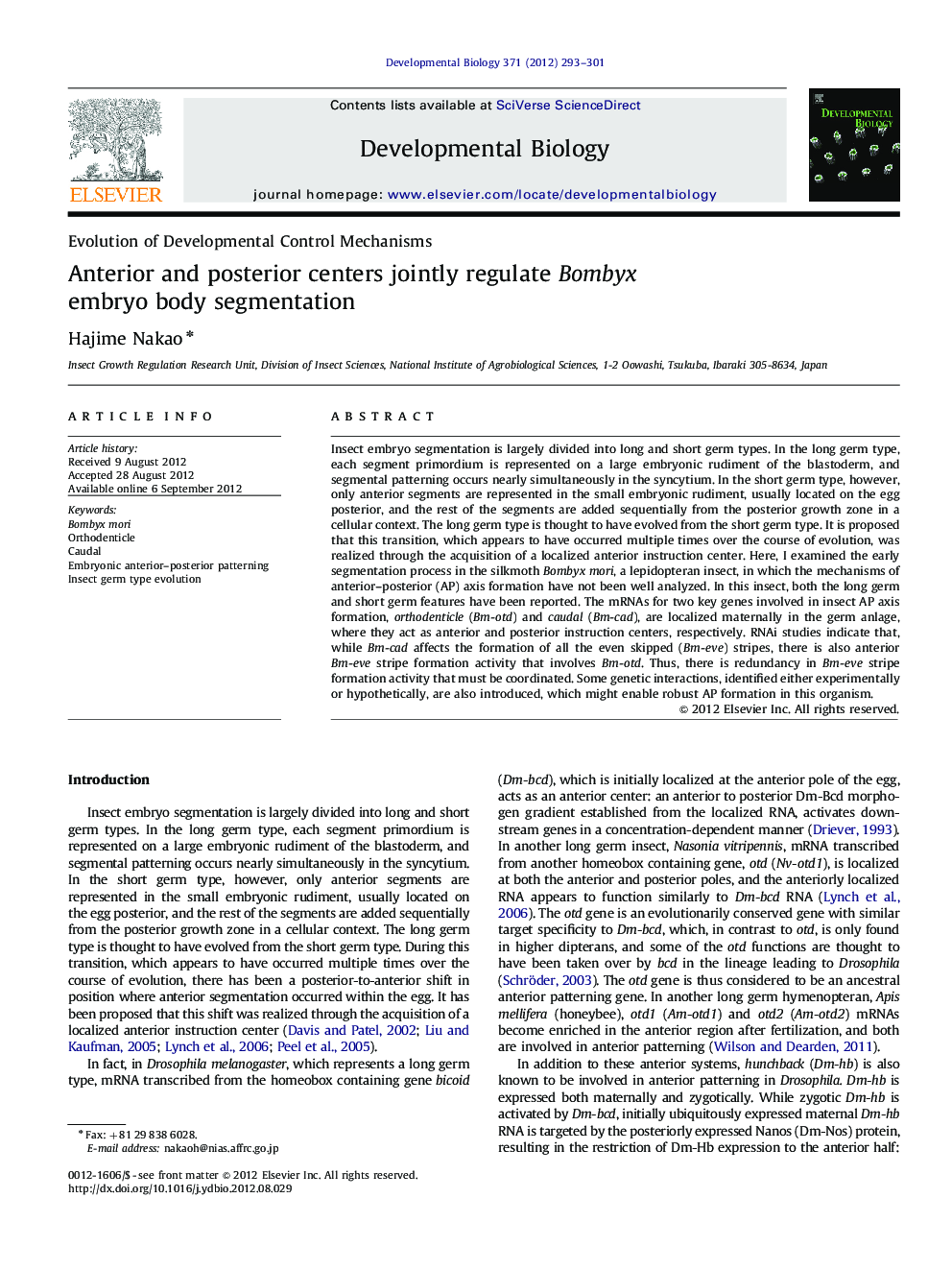| Article ID | Journal | Published Year | Pages | File Type |
|---|---|---|---|---|
| 2173207 | Developmental Biology | 2012 | 9 Pages |
Insect embryo segmentation is largely divided into long and short germ types. In the long germ type, each segment primordium is represented on a large embryonic rudiment of the blastoderm, and segmental patterning occurs nearly simultaneously in the syncytium. In the short germ type, however, only anterior segments are represented in the small embryonic rudiment, usually located on the egg posterior, and the rest of the segments are added sequentially from the posterior growth zone in a cellular context. The long germ type is thought to have evolved from the short germ type. It is proposed that this transition, which appears to have occurred multiple times over the course of evolution, was realized through the acquisition of a localized anterior instruction center. Here, I examined the early segmentation process in the silkmoth Bombyx mori, a lepidopteran insect, in which the mechanisms of anterior–posterior (AP) axis formation have not been well analyzed. In this insect, both the long germ and short germ features have been reported. The mRNAs for two key genes involved in insect AP axis formation, orthodenticle (Bm-otd) and caudal (Bm-cad), are localized maternally in the germ anlage, where they act as anterior and posterior instruction centers, respectively. RNAi studies indicate that, while Bm-cad affects the formation of all the even skipped (Bm-eve) stripes, there is also anterior Bm-eve stripe formation activity that involves Bm-otd. Thus, there is redundancy in Bm-eve stripe formation activity that must be coordinated. Some genetic interactions, identified either experimentally or hypothetically, are also introduced, which might enable robust AP formation in this organism.
► Bombyx possesses a localized anterior center. ► Bm-cad RNAi eliminates all Bm-eve stripes except for a lateral stripe pair. ► The pair disappears in Bm-otd and Bm-cad double-knockdown embryos. ► There is redundancy in anterior and posterior Bm-eve stripe forming activity. ► These activities must be coordinated.
